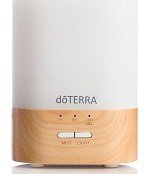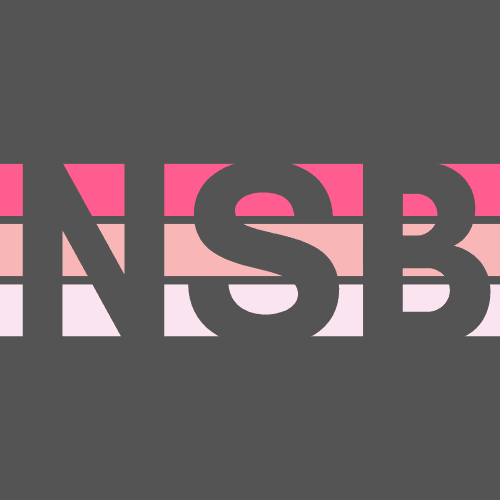There are a number of studies (plus a whole lot of anecdotal evidence) that diffusing essential oils can produce the following benefits, depending on the type of oil:
- reduces stress
- improve mental clarity
- uplift our mood
- calms and promote a sedative effect (useful before sleep)
- purify the air
Essential oils are so much more than air fresheners!
Types of Essential Oil Diffusers
There are a few different types of essential oil diffusers which can be confusing. The ones I have come accross include:
- Heat Diffuser
- Evaporative Diffusers
- Nebulising Diffusers
- Ultrasonic/Humidifying Diffusers
In addition to researching them I’ve tried each type of diffuser and have learned what I like and what I don’t about each type.
1. Heat Diffuser
A heat diffuser, like it sounds, uses heat to turn water with a few drops of essential oil into a gas that disperses into the air. These can be electric or use the heat of a candle/flame.
I have not found a heat diffuser that worked nearly as well as even the worst nebulizer or ultrasonic diffusers I’ve tried, so I can’t make any recommendations on these types of diffuser and since heat affects the beneficial properties of the essential oils, I definitely don’t recommend this method for diffusing oils in general.
2. Evaporative Diffusers
These diffusers use a fan to increase air flow across an essential oil soaked pad or lining. As the liquid evaporates, the scent (and its properties) move into the air.
Another type of evaporative diffuser is diffuser pendant jewelry. The theory is that the essential oil will naturally evaporate and permeate the air and skin.
I don’t find this type of diffuser nearly as effective as the remaining two.
3. Nebulizing Diffusers
Nebulizing diffusers are often considered the most powerful type of diffusers, and with good reason. They do not need water or heat to get the essential oil in to the air and they work by using an atomizer to create fine, airborne particles of essential oils and blowing them in to the air.
If you can’t tell, nebulizing diffusers are my favorite type of diffuser. If anyone gets sick they can keep a near-continuous stream of essential oils in the air and can fill a room of many square feet.
Here’s my thought process and experience with this type of diffuser:
Pros:
- Attaches directly to the bottle of essential oil and can be turned on with the flip of a switch
- No water or set-up required
- Strong concentration of essential oils released into the air
- Timers control run time and rest time let you control how long it runs and provide an option other than continuous use
- No light so they can be used at night.
Cons:
- Noise level is louder than ultrasonic diffusers
- Uses oils more quickly than ultrasonic or other diffusers since they attach directly to the diffuser so you need to restock more frequently.
- More expensive than most ultrasonic diffusers (though not by much)
Even just diffusing for 15 minutes will leave a lasting essential oil scent for hours.
4. Ultrasonic Diffusers
Ultrasonic diffusers work in a similar way to nebulizing diffusers by creating a fine mist. The difference is that ultrasonic diffusers use water and essential oils to create an ultrasonic cool mist of water/oils that releases in to the air. They double as a humidifier, they don’t put out as strong of a concentration of essential oils since they also use water so oils last you longer.
Pros:
- Less expensive than nebulizing diffusers
- Doubles as a humidifier
- Many options to choose from
- Doesn’t use heat
- Water tank has a large capacity
Cons:
- Some have lights that can’t be turned off
- Not as effective as nebulizing diffusers
What we use: Several different types of ultrasonic diffusers and I’ve found that some work better than others. These were our favorites:
- The Petal Diffuser
The Petal Diffuser permeates an ultra-fine, yet substantial mist output into the air, releasing the aromatic and therapeutic benefits of doTERRA CPTG® essential oils quickly and safely. This high quality, affordable diffuser is perfect for both novice and experienced essential oil users who want a reliable, easy-to-use essential oil diffuser.
Product Features
Substantial mist output helps purify and humidify the air
1, 2, and 4 hour diffuser settings
Optional LED light
Ultra-fine mist reaches up to 330 square feet
Simple, 3-piece diffuser is easy and convenient to useStable and light for the many spaces in your life
and the best I can recommnd is the Lumo
Description
Influenced by nature, the Lumo diffuser features a maple wood base and several light settings inspired by natural elements. Offering customizable output, Lumo can run 2 to 5 hours continuously and 10 hours intermittently.
Product Features
- Customizable output: 2 or 5 hrs continuous preset/10 hrs intermittent preset (5 min. on/5 min. off)
- Ultrasonic technology
- Seven lighting color options
- Maple wood base
- Coverage of up to 540 sq. feet

Both can be PURCHASED FROM HERE
Essential oils are powerful essences from plants with medicinal effects. I think using a diffuser is a great step, but urge everyone to do their homework. If you have a family, make sure to diffuse only Pure Certified Therapeutic Grade, safe essential oil blends and take breaks by buying a model with controlled mist settings.
Have you ever used a diffuser? What did you like or not like about it? Share below!



